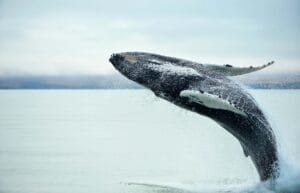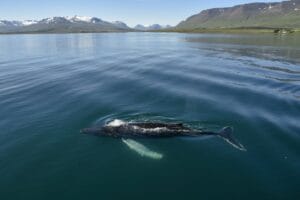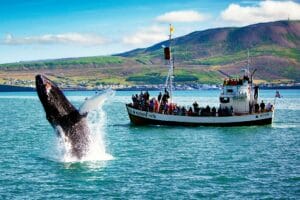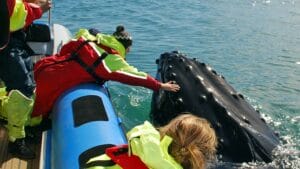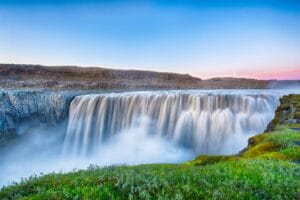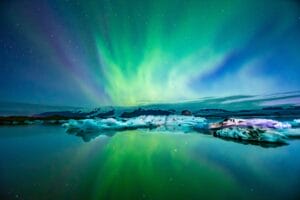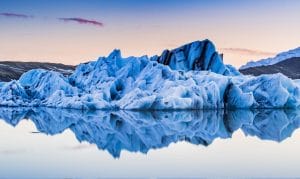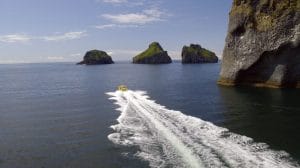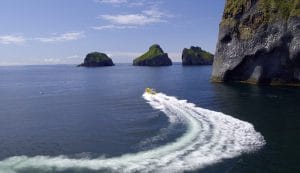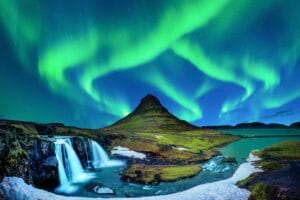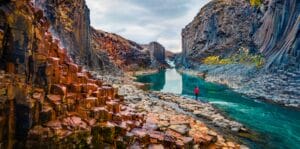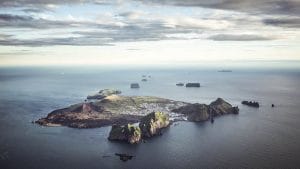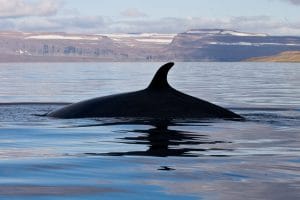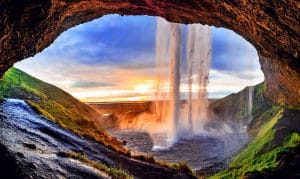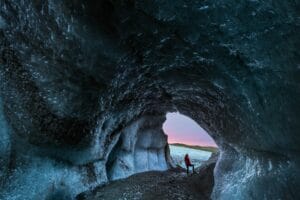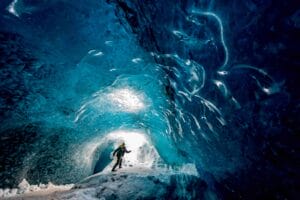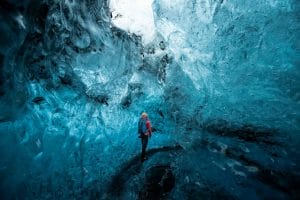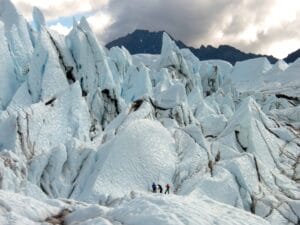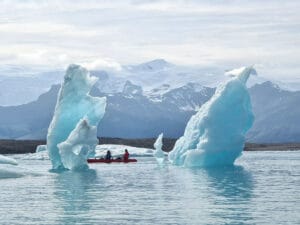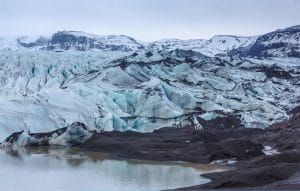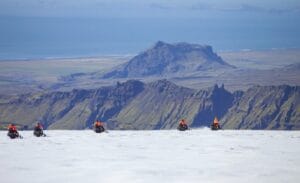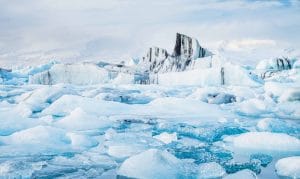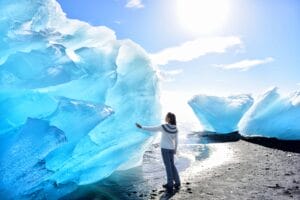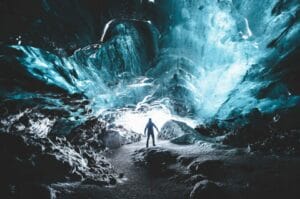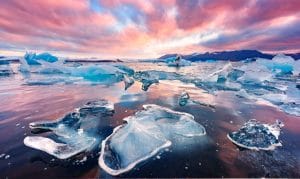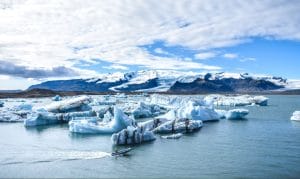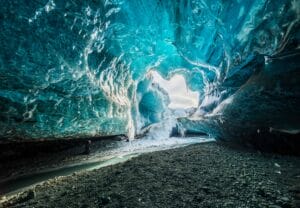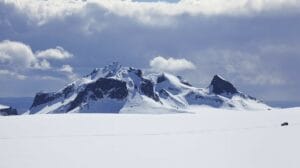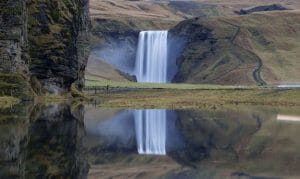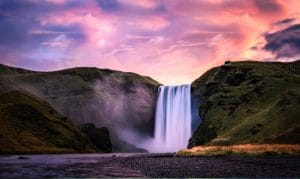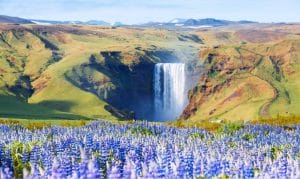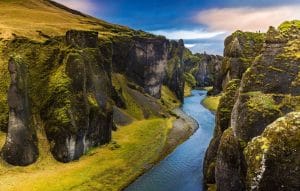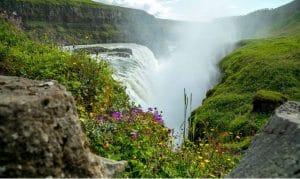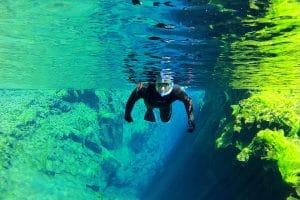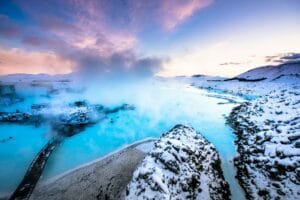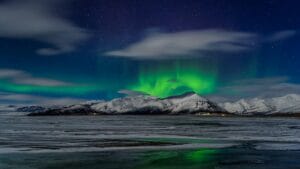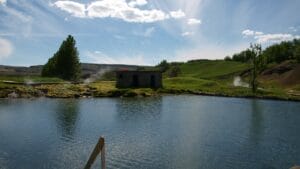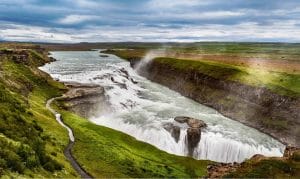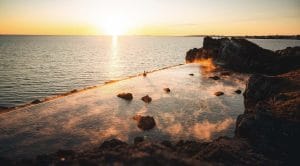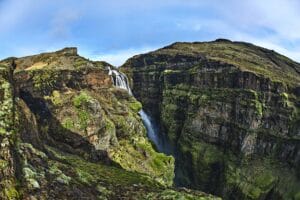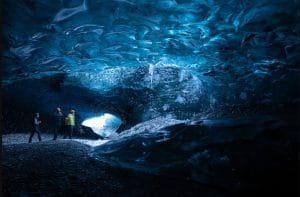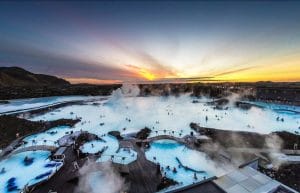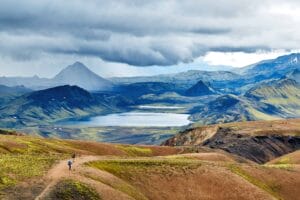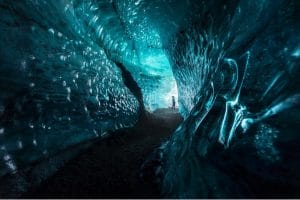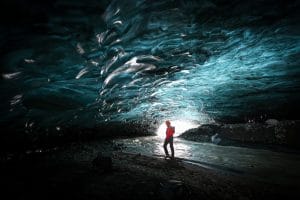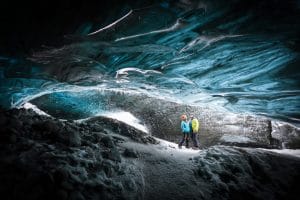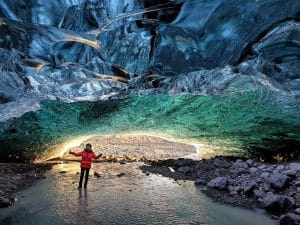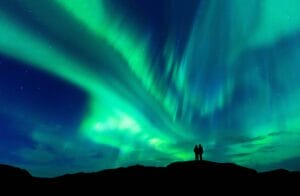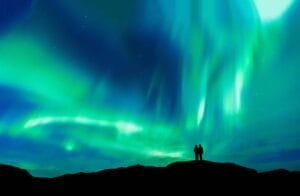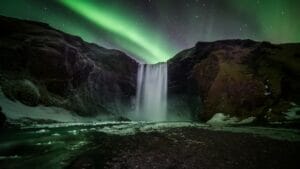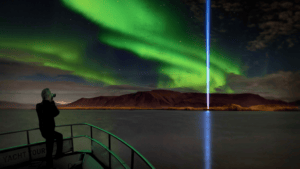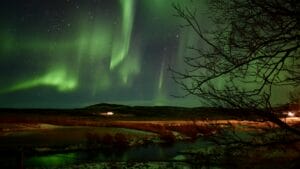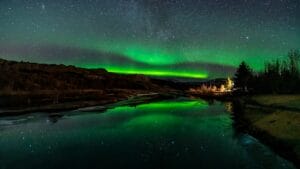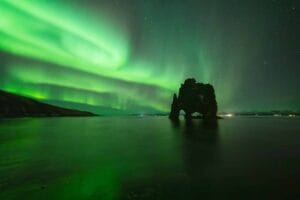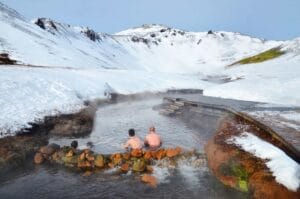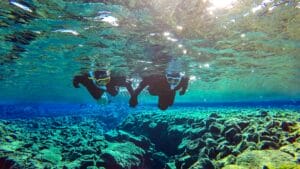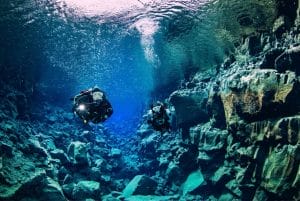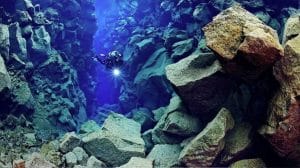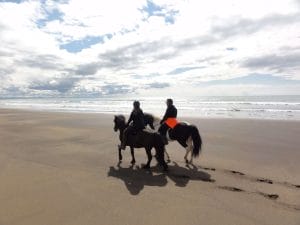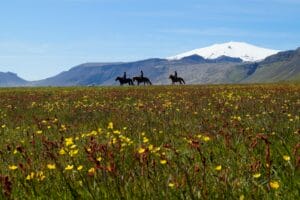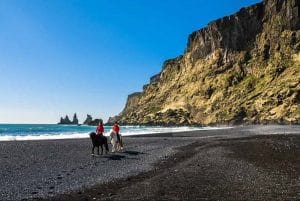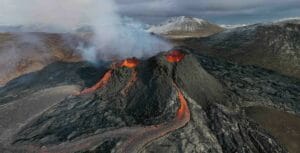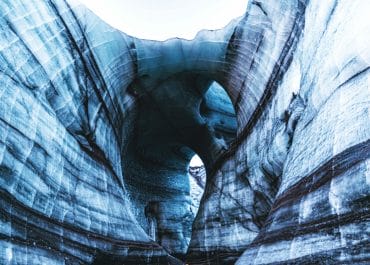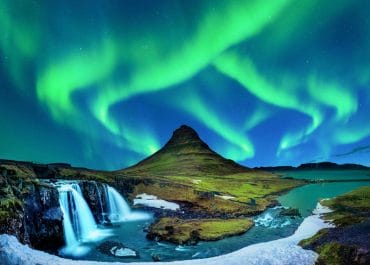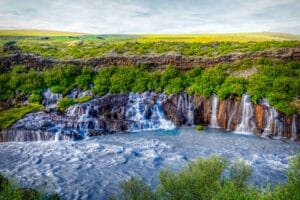Iceland is a Nordic nation that homes several active volcanoes. One of the best months to visit the country is March, when you not only get to experience snow but also enjoy the Northern Lights. The month is the time when the nation witnesses various food traditions like the Food and Fun Festival. This is the time when natives go skiing in Akureyri, Siglufjordur, and Dalvik in the North. This is one of the least busy times that allow you to enjoy the scenic beauty without the crowd.

Iceland Weather in March
Temperature:
The temperature of Iceland in March is around 0oC. The average low temperature is -2.2oC and high temperature is 3.3oC. There are possibilities of rain. However, the farther you go into the North, the rain switches to snow. Do not forget to check the Iceland weather when planning your trip to this North Atlantic country. The temperatures of Iceland are mitigated by the Gulf Stream, which brings relatively warm water up from the lower latitudes.
Daylight Hours in March:
March brings in a remarkable change in the daylight conditions. Between March 1st and the 31st, every day the daylight extends by 10 minutes. This implies that at the beginning of the month you have only 10 hours of daylight, by the end of the month it increases to about 13 hours.
Precipitation:
The average rainfall in the capital city Reykjavik is approximately 82mm in March. This precipitation could be rain or snow. It is therefore recommended to carry lots of layers and waterproof shoes so you can enjoy the weather variations in the country.
Best Self Drive Activities in Iceland in March

Pros of Visiting Iceland in March
March witnesses a low season in Iceland. You can enjoy the abundance of attractions in the country. This is the perfect time to witness the Northern Lights with multi-colored waves in the night sky. During this month the auroras are stronger at the beginning of the month. This is the ideal month to go whale-watching in Husavik, on Iceland’s northern shores. March is the perfect time to visit the Nordic nation if you are seeking moderate temperatures, less crowd, snowy landscapes, and queues. Another major reason to visit the country in March is the low travel costs. Enjoy the best of both sides – the winter beauty with the summer adventures.
Cons of Visiting Iceland in March
Visiting Iceland in March can result in facing some rough weather conditions. Although the roads are not completely iced, there is a risk when it comes to driving through the country during this season. Since the weather takes a warmer turn, you can spot patches of ice on the road, making it difficult to drive for those who are not navigating through such conditions. Therefore, consider renting a 4×4 vehicle for the terrains that may get rough.
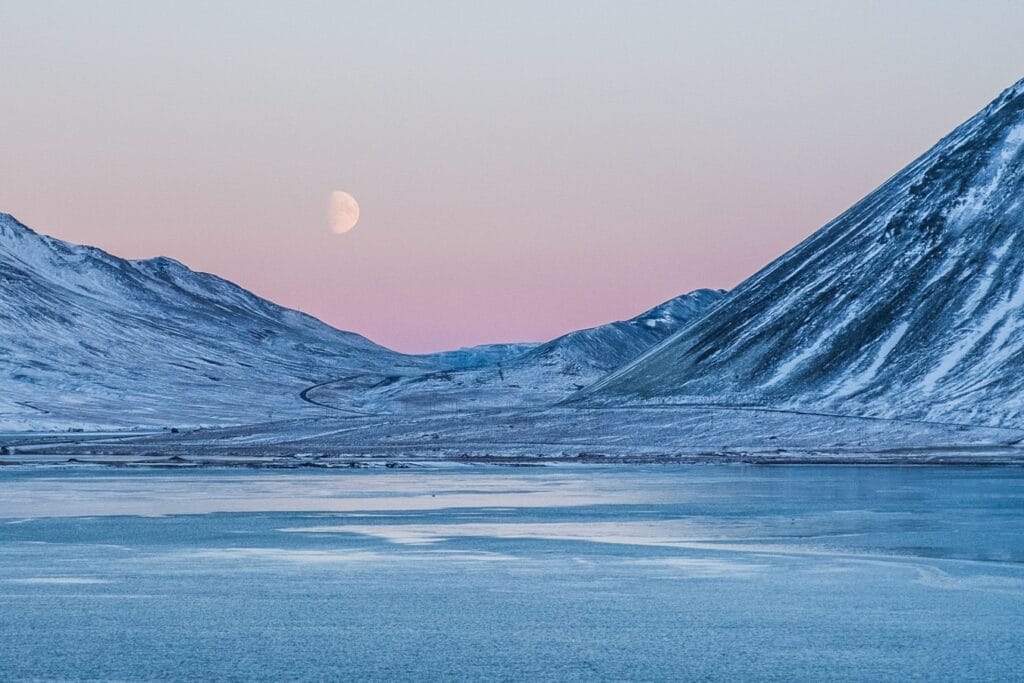
Your To-Do List for Iceland in March
While there are ample of things to do in Iceland, March has its distinctive itinerary. Despite being an off-season, you can enjoy several tourist attractions and experiences. You can get indulged in Icelandic culture and engage with the locals. This makes March an ideal time to see and do everything that Iceland has to offer. Here is a list of things you can do in this season:
Go for Road Trip

This month is a great time to explore the south coast of Iceland by road. Drive the full Ring Road of Iceland and explore the Eastfjords, and far North. Or take a shorter trip and go to Snaefellsnes Peninsula, the Golden Circle or the South Coast. Since it is a low season, you can use this time for taking a road trip along the Ring Road. This road circles the entire country, and driving on this road will allow you to explore the best of Iceland’s landscapes and views. However, you should look out for icy spots on the roads. Make sure you use a decent vehicle to do the trip in and plan for emergencies.
Take a Walk around Reykjavik
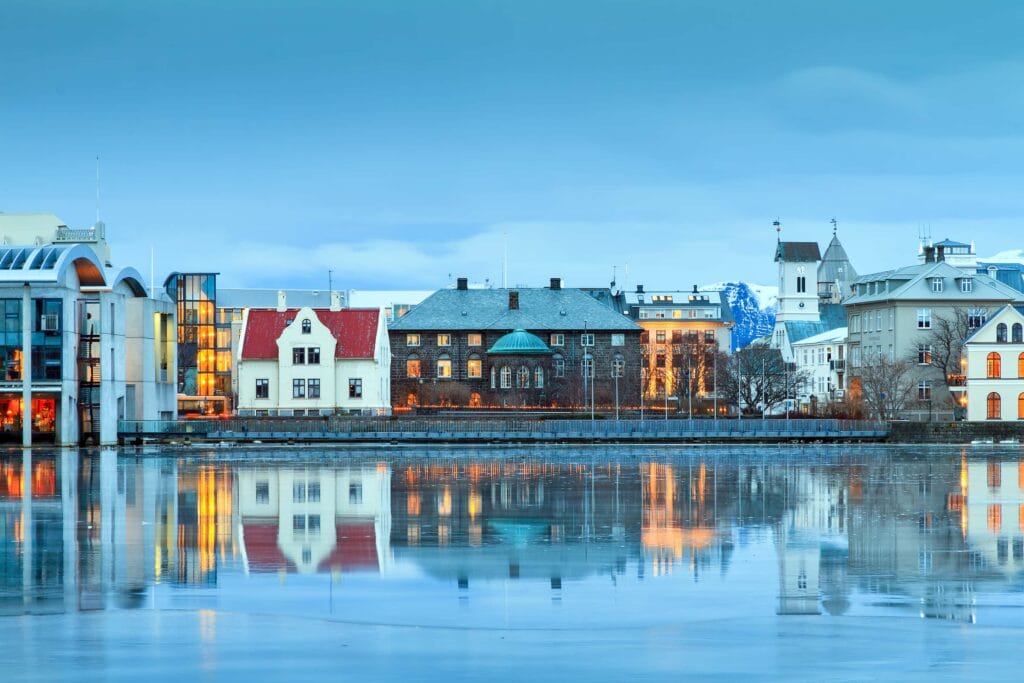
The capital city of Reykjavik is host to unique places and streets, colorful scenes, and the most amazing shops and stores. The main street is Laugavegur and is parallel to Hverfisgata. Take a stroll down these lanes if you do not plan to visit other places. You can also walk to the big church Hallgrimskirkja. The month makes everything outdoors appear beautiful.
Whale Watching in Iceland
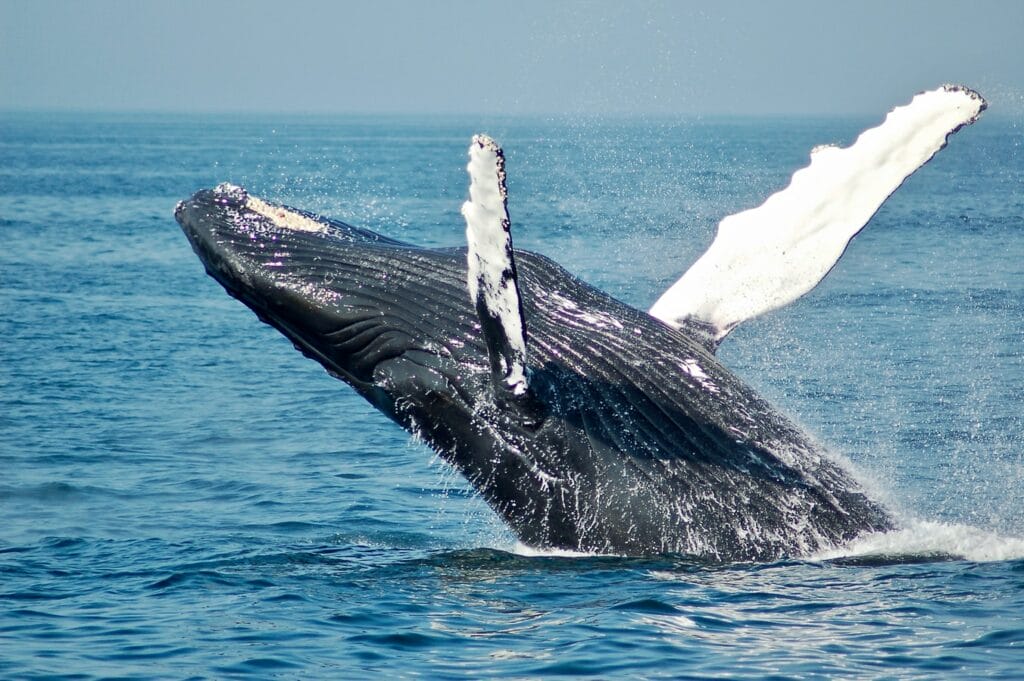
March is a beautiful time to be in Iceland if you plan to go for whale-watching. The best place to catch sight of the largest mammal is in Husavik, which is situated on Iceland’s northern shores. You can catch the sight of Humpback Whale, one of the notorious whales. You can also sight some dolphins and even porpoise. You can also consider taking a whale watching tour from Reykjavik harbor downtown in only 45 minutes.
Go Glacier Hiking
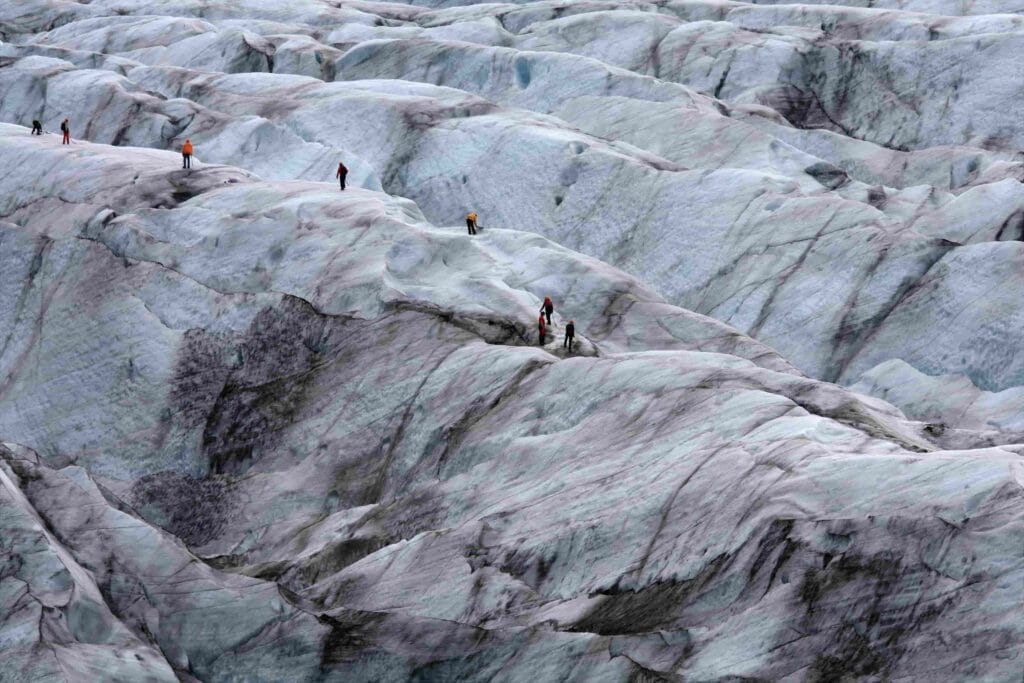
Hiking the glacier is something not all destinations offer and is unique to Iceland. With special shoes and a wise guide, consider hiking the largest glacier in Europe, Vatnajokull. Many glacier hiking tours start from Skaftafell Nature Reserve in the Southwest of Iceland. This glacier hike is a paradise for hikers and a necessary destination for those who want to explore the Nordic scenery and nature.
Exploring the Golden Circle Tour
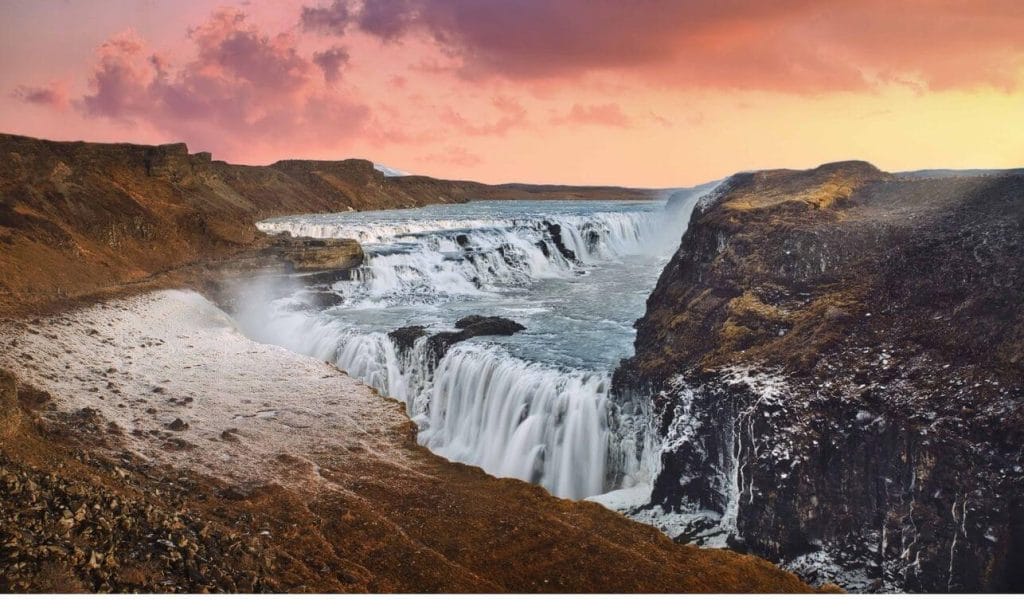
Gold Circle is the most popular tourist trail in Iceland. This route hosts three of Iceland’s famous sites: Thingvellir National Park, Geysir Geothermal Area, and Gullfoss Waterfall. Thingvellir is recognized as the UNESCO World Heritage Site on the Icelandic mainland. This Geysir Geothermal Area is a hot spring geyser in Iceland. Though Geysir is no longer active, Strokkur its sister geyser erupts every five to ten minutes. The area is surrounded by hot springs, steam vents, and mud-pots. The Gullfoss Waterfall is renowned in the country. The waterfall appears even more scenic when the rocks around it are covered with ice while the surrounding area is deep in snow. You can take detour Golden Circle to discover the natural beauty of the area.
Celebrate National Beer Day with the Locals
Every year, on March 1st, Iceland locals celebrate Beer Day. This occasion honors the day when beer became legal in Iceland after 74 years of prohibition. Every local commemorates the day by enjoying an ice-cold beer. There are beer sprees in bars and pubs across the country which can be enjoyed by visitors as well.
Food and Fun Festival

The capital city organizes Food and Fun Festival, an annual event where the best restaurants get guest chefs to prepare fresh quality ingredients and create a special menu for the occasion. The meals prepared are exceptional as the ingredients are mainly fish and meat that come straight from the shore. The chefs are provided with the best ingredients to cook with. This festival is a mix of talent and delicious adventure. This started in 2002 to boost Iceland’s tourism in the winter.
Tour the Natural Glacial Caves

Iceland is home to the glacier ice caves – the natural caves formed inside the glaciers. They make a magnificent sight. The ice of glaciers is blue during the spring of March. The beginning of spring in Iceland is the perfect time to experience the meeting of winter meeting the turquoise blue ice of the summer.
Go Skiing
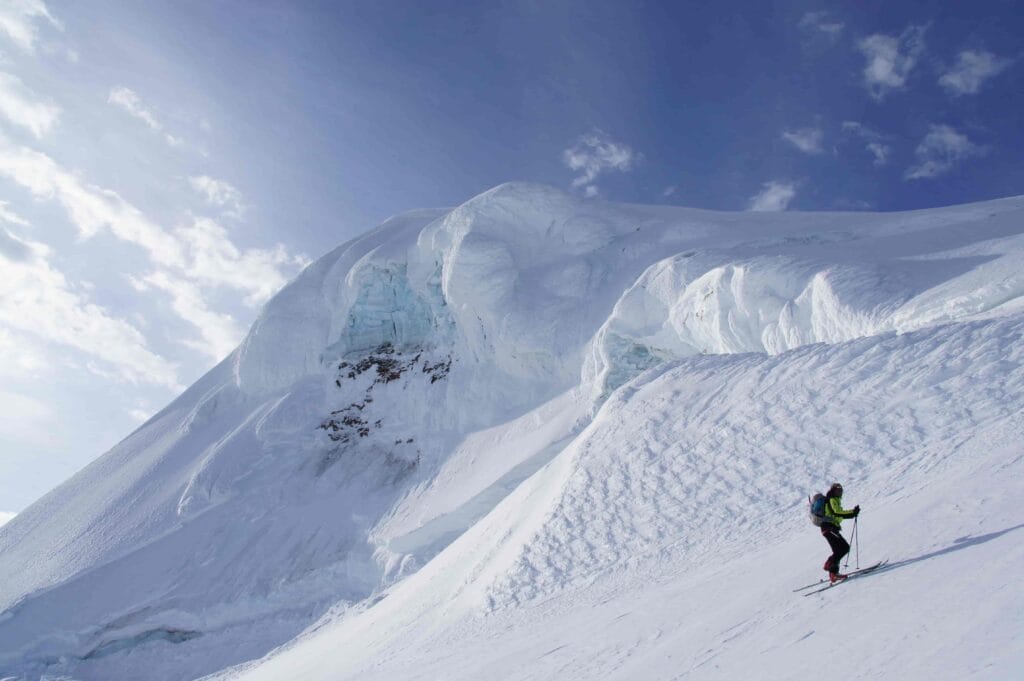
March is the perfect time to go skiing in Iceland. Travel up to the Northern part of Iceland to locate slopes and powdery snow. Akureyri is one popular destination for skiing. Its hills of Hlidarfjall are excellent for skiing and provide an escape from urban life.
Snowmobiling
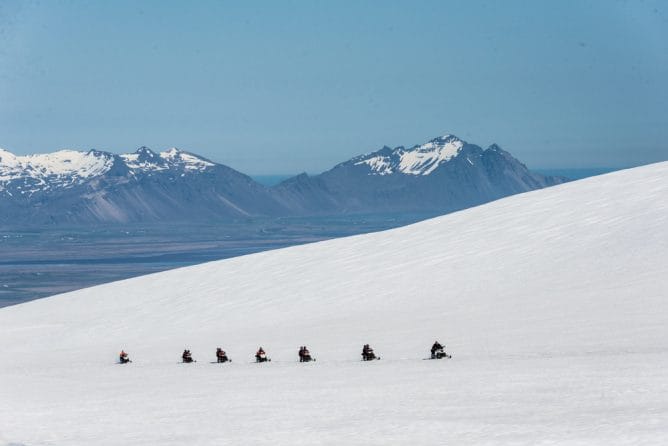
Many guides find March the best month to snowmobile. The winter snow is still prevalent and the summer sun is out, and the landscape appears to be scenic.
Snowmobile Tours

The Blue Lagoon is famous for its scenic beauty and warmth, rich, mineral water which is perfect for your skin. This lagoon offers variable options from a simple lagoon swimming to a full spa treatment with mud masks and other beauty enhancing treatments. The lagoon is made in a lava field and uses the area’s geothermal power to create a magical atmosphere. You can even buy skin and beauty related products made from natural ingredients found in and near the lagoon area.
Savor every Moment of the Northern Lights

March in Iceland offers the last opportunity to see the Northern Lights before the summer starts. The month has the perfect amount of dark hours to be able to see the magical natural lights. You can easily spot the dancing light waves in the little amount of moonlight. The March Equinox makes the aurora display more prominent.
Visit the Black Sand Beach
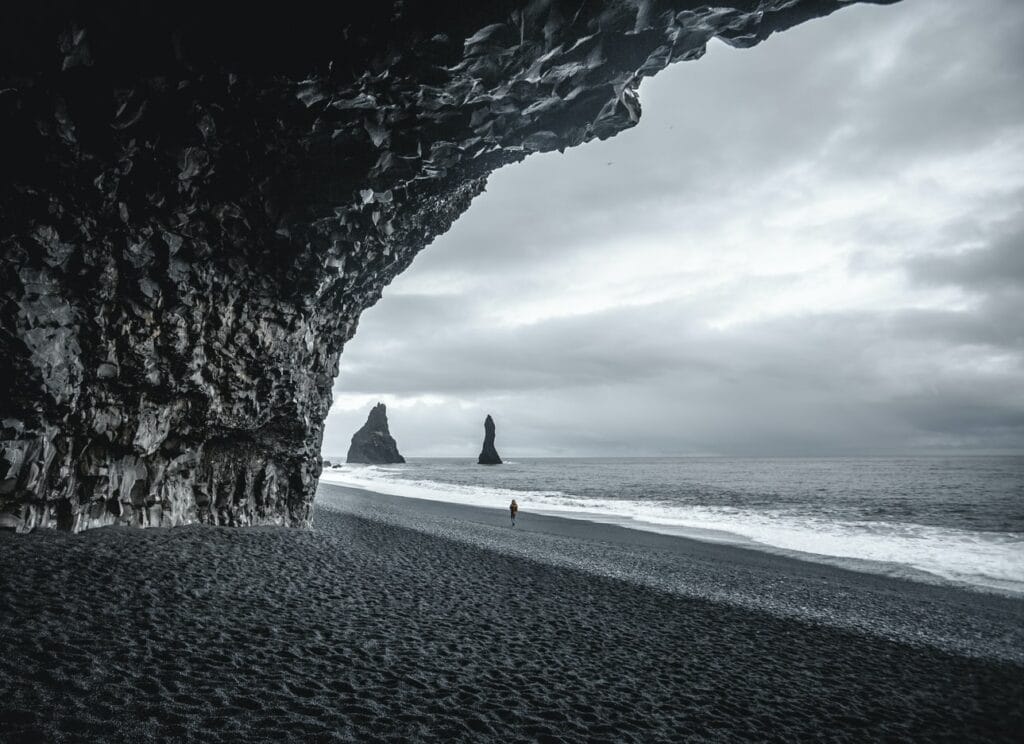
The black sand beaches are one of Iceland’s most beautiful site. Formed from a dormant volcano’s cool-down lava, the beach is unique and unlike other beaches across the globe. It offers a unique spot for tourists to view. Besides, the scenic beauty, you can also view the mystic rock formations and astounding view of the wild ocean.
Participate in Design March in Reykjavik
It is an annual festival that captures the widest interest group. It features exhibitions and shows created by artists and designers that take place in the capital city for you to enjoy. You can purchase anything- from blankets to furniture for the home and daily utility. The festival opens on the 15th March at Hafnarhúsið and lasts till the 1st of April.
Snorkeling and Diving
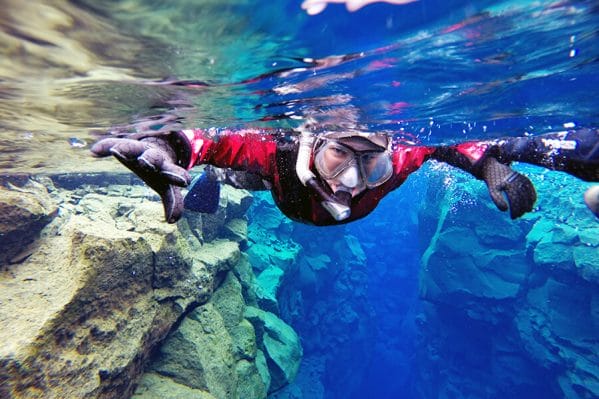
Go snorkeling in Silfra fissure, a ravine which opened within Thingvellir National Park, a freshwater spring, and has visibility of over 100 meters. Snorkeling in Iceland is a thrilling activity and is popular among travelers. The activity is usually done in a drysuit for added protection. You can also take part in scuba diving tours. These tours are led by experienced dive masters who ensure that you are confident with equipment and the temperature.
Explore the wreck of the Solheimasandur Plane

Solheimasandur Plane Wreck was a US Navy DC plane that ran out of fuel while flying over Iceland. It crash-landed in the southwest of the country. It is an interesting landmark and offers photo-clicking opportunities. Explore the inside and out of the plane and click snaps of the scenery. You can also take a walk to the ocean and breathe in the scenic view.
Go Horseback Riding

The Icelandic horse is a pure breed that existed over 1000 years which is famous for the gait tolt. The tolt is soft gait than a gallop. Take a horse riding tour or visit a farm where you can pet them. The horse is human-friendly and during this time of the year it has thick fur which makes it appear like a furball.
What to Pack when Travelling to Iceland in March?
The weather in the country remains unpredictable in March. Therefore, you should consider bringing clothes that are not just warm but also keep you dry in case of rain or snow. While there is a lot to explore indoors, the most amazing adventures like hiking, walking, and skiing are outdoor activities.
When packing for a trip to Iceland in March, consider packing layers of clothing. The weather can change throughout the day and you must dress accordingly. Pack the right clothes and shoes such as:
- Thermals
- Wool Sweater
- Insulated Pants
- Wool Socks
- Hat, Scarf, and Gloves
- Rainproof Hiking Boots
- Rainproof, insulated winter jackets
- Fleece pullover
- Swimsuit
Do not forget to pack other important items such as:
- Toiletries – soap, shampoo, bath towels, etc.
- Sunscreen and sunglasses
- Moisturizer
- Head net
- Face mask – to sleep in a relaxing way
- Gadgets such as camera, phone, tabs and charging equipment
- Prescribed medicines and additional medicines for the trip
Pack your swimsuit when you visit Iceland in March. The place is known for its thermal pools and offers a great way to warm up in the chilly weather by relaxing in the natural hot springs.
The season offers lower-cost trips with a long list of activities to participate in Iceland in March. You will be able to appreciate the best of both seasons of the country – the scenic winter and summer adventures. Enjoy this magical trip and intake the natural beauty of the country.

